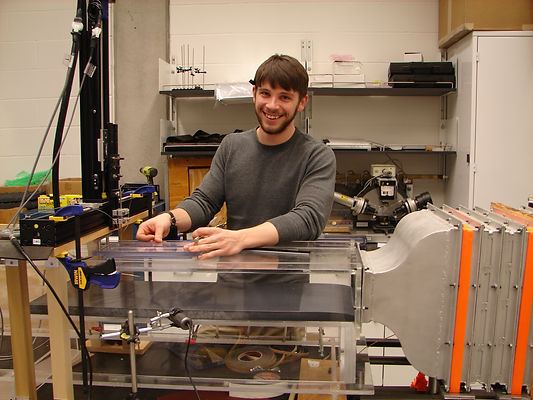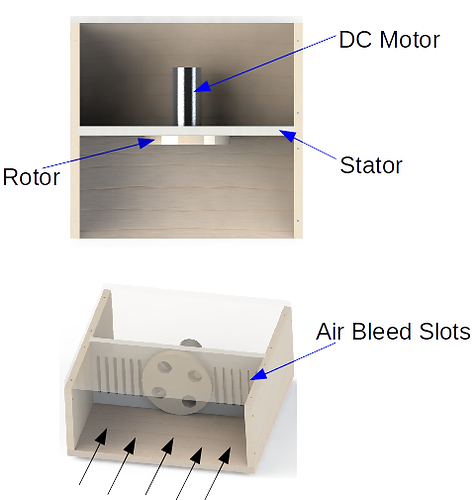Drummond Biles
Mechanical Engineering PhD Candidate | University of New Hampshire
NEAT Wind Tunnel
The Non-Equilibrium And Thermal boundary layer wind tunnel was what I helped to develop a part of PhD work. The research which I am investigating pertains to the interaction of temperature and velocity close to a boundary. This information can help uncover some of the links between shear stress created by velocity differences and heat flux created by temperature differences. This tunnel also has the ability to introduce a pulsating pressure gradient which produces sinusoidally varying velocity in the tunnel (ie Fast-Slow-Fast-Slow..). The development of the wind tunnel and the specific research performed in it will be detailed below.




Neat Tunnel Development
Upon entering graduate school the picture to the left details what the NEAT tunnel looked like. It had been used for boundary layer studies and had no components for incorporating temperature.

The picture to the left displays a new frame for the tunnel to sit on, which was designed and built in-house. This allowed for precise adjustment of the tunnel and easy optical access from side mounted optics boards, displayed right, also manufactured in-house.
Happily working on setting up an experiment to evaluate the operation of the nose (front elliptical shape) on the wall plate seen on the tunnel floor.
A large design project which I undertook in-order to perform my research was the development of a thermal wallplate. The picture above details the solid model and is a link to a more in-depth discussion of the project.
A rotor-stator mechanism was developed to create pulsatile flow in the wind tunnel. The picture below details the solid model of the design and acts as a link to a page where the design procedure is discussed.
A video detailing the installation of the thermal wallplate.
CLICK on the above image to learn more about the thermal wallplate design
CLICK on the above image to learn more about the Rotor-Stator design

